Korea 70 years on – how RSL NSW members remember the Korean War

From 25 June 1950 until 27 July 1953, over 17,164 Australians in the Army, Navy and Air Force served as part of the United Nations (UN) multinational force, defending South Korea from the Communist forces of North Korea.
To commemorate the 70th anniversary of the Armistice of the Korean War, a new exhibition at the Anzac Memorial honours the service and the sacrifice of Australian Korean War veterans, featuring the photographs and stories of 11 veterans. Notably, among the 11 veterans, eight RSL NSW members shared their personal stories of service during the Korean War with the Anzac Memorial.
Raymond Burnard – Bowral RSL sub-Branch

“We got moving as quickly as possible, under cover of what little scrub there was. Suddenly there was a burst of machine gun fire. Only one bullet hit anyone. It hit me just at the base of the throat.”
Brigadier Raymond Burnard served in the Korean War as a Platoon Commander with 3RAR from February 1953. After Korea Burnard continued his career in the Army, and was an original member of the SAS. After Korea, Burnard continued his career in the Army and was an original member of the SAS. He is now enjoying an active retirement in the Southern Highlands of NSW.
Ernest Holden – St Marys RSL sub-Branch

“I was on the front lines for three and a half weeks. It was no man’s land during the day. I went on patrol at night. I never did run into any Chinese soldiers. They knew Ernie was coming so they’d get right out of the way!”
Private Ernie Robert Holden was just 20 when he deployed to Korea with the 2nd Battalion, The Royal Australian Regiment (2RAR) between March and May 1953. During the war, he was wounded in a minefield while trying to rescue injured mate Corporal Jack Ashe, who is still missing in action.
Ronald Lovell – City of Liverpool RSL sub-Branch
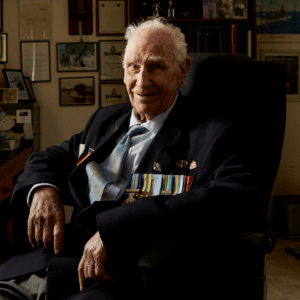
“These years were both sad and satisfying, experiencing the comradeship of great mates, being scared and frightened of the unknown, not knowing if they would survive, being homesick but delighted to receive mail and packages from home, witnessing death and injuries but also a feeling of satisfaction and accomplishment in the end.”
Private Ronald Lovell served in 3RAR from December 1952 for about a year. He saw action in the Samichon Valley then five months of garrison duty after the Armistice. When he returned home, Ron retired from the Army and went back to civilian life. He worked in the transport sector, driving a truck and contracting out to the Department of Main Roads.
Sheridan O’Brien – ANZAC House RSL sub-Branch
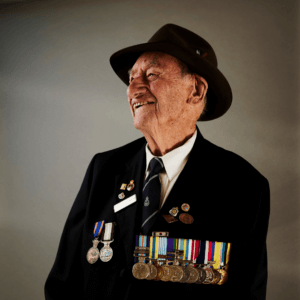
“All I can say is I’m pleased that I joined and I’m pleased that the skills I learned helped me when I got out of the service.”
Leading Seaman Sheridan O’Brien served on the RAN frigate HMAS Culgoa in Korean waters in 1953. Culgoa provided naval gunfire support close inshore on at least two occasions and spent the rest of her deployment patrolling. After he returned from Korea, he continued his career in the Navy until 1970, when he retired as a Warrant Officer. He completed 20 years of full service and 2 years of Reserve service. After his retirement from the Navy, he worked in ocean research and he volunteered as welfare people to help ex-servicemen and women.
Raymond Oliver – Ingleburn RSL sub-Branch
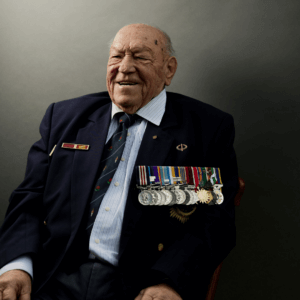
“It got down to minus 27 degrees. It was one of the worst winters they had. We were fitted with special winter gear. It was very heavy, American gear but it was very good.”
Private Raymond Ivan Oliver served on garrison duty with 1RAR from December 1955 to March 1956 following the Armistice. He continued his service in the Army for the next 33 years, serving in the Malaya Emergency and two tours in Vietnam with the Australian Army Training Team Vietnam (AATTV) where he was awarded the Military Medal for bravery in the field.
James Reardon – St Marys RSL sub-Branch

“Well, when you’re down below decks, you don’t really know what’s going up there. The only thing you are conscious of is that something is about to happen when you get called up for Action Stations. You know where you are supposed to go and what you’re supposed to do if anything happened.”
Assistant Steward James Reardon served aboard the aircraft carrier HMAS Sydney in Korean waters after the Armistice from October 1953 to June 1954. After the war he worked as a marketing reporter for the NSW Department of Agriculture, and has dedicated a considerable amount of time volunteering for his local RSL sub-Branch.
Jack Skipper – Mosman RSL sub-Branch
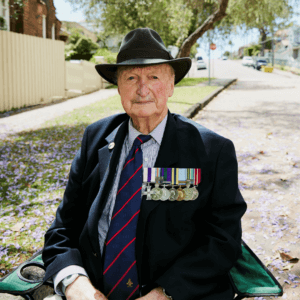
“I treasured my time with the very capable diggers of B Company 6 Platoon. I enjoyed my liaison duty with vehicle and radio operation at the Republic of Korea unit alongside Hill 355.”
Lieutenant Jack Skipper was posted to the Korean War with 1RAR for 12 months after graduating from the Royal Military College, Duntroon. He earned his Military Cross for “courage and devotion to duty” while commanding a fighting patrol that engaged with the enemy three times in no-man’s land in 1952. After serving in Korea, Jack returned to Haramura Battle School in Kure, Japan, as an instructor.
Joseph Vezgoff – Austinmer-Thirroul RSL sub-Brach
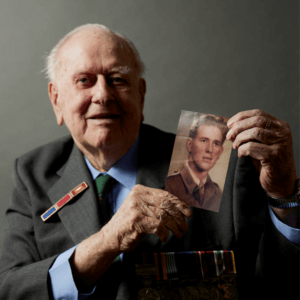
“Late in November the frozen winds arrived, and the temperature dropped below zero. Our hands would freeze to the bare metal of our weapons, so we slept with them tucked against our bodies to stop them freezing up.”
Corporal Joseph Vezgoff served as a Section Commander in a rifle company of 3RAR in the Korean War from September 1950 to October 1951. He fought in the legendary battles of Kapyong and Maryang San. After the war, Joe served in the Army for 20 years. He has always nurtured a passion for drawing and until recently, due to failing eyesight, has continued to be active in painting and involvement with local art societies.
Running from 2 June – 7 August 2023, the Armistice in Korea exhibition is a project of the Consulate General of the Republic of Korea in Sydney, in collaboration with the Anzac Memorial, Sydney, and features the photography of Tae Yun. Entry is free.
Photo credit: Consulate General of the Republic of Korea in Sydney.






